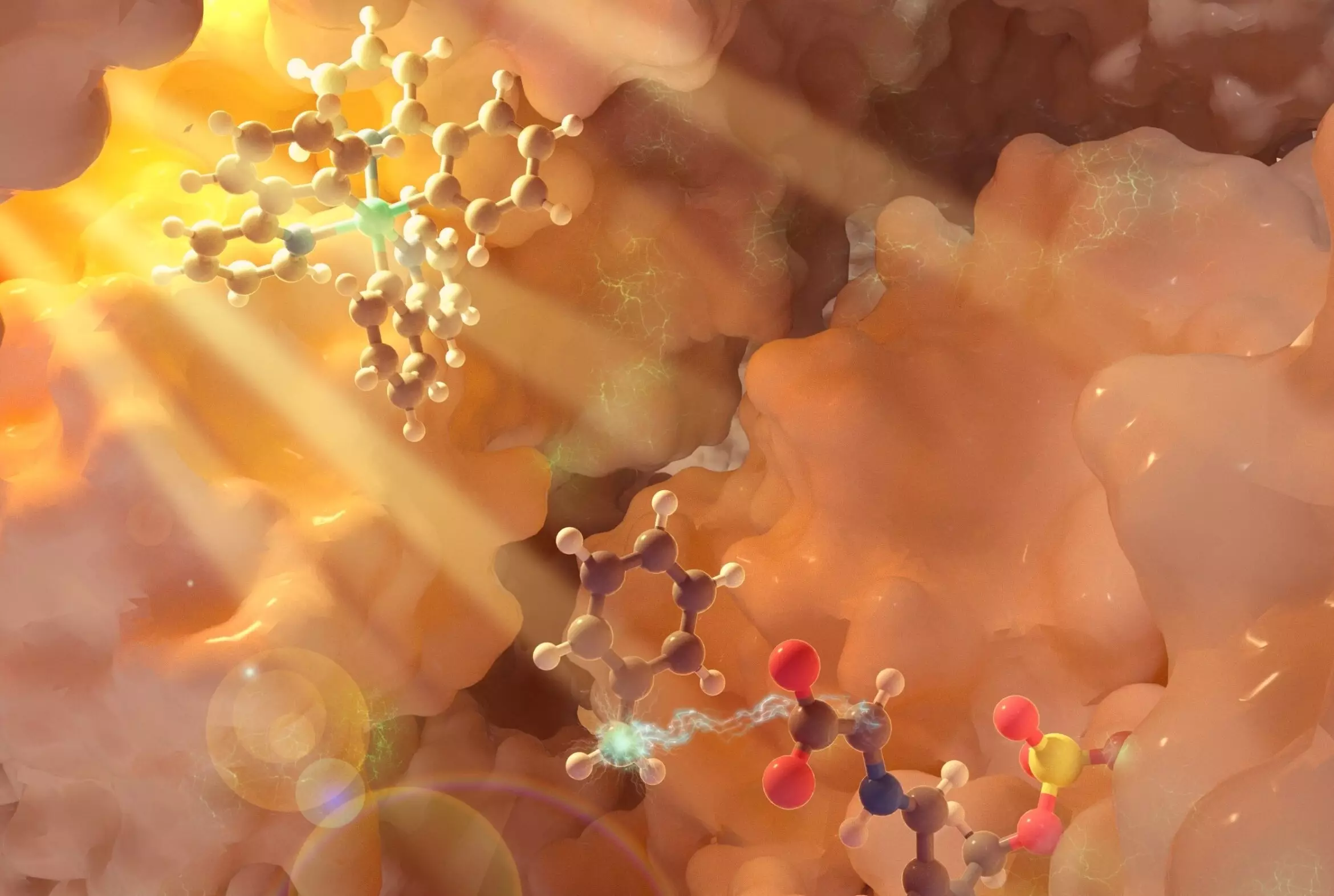UC Santa Barbara researchers have made significant strides in expanding the realm of chemical reactions by incorporating the use of light. Led by chemistry professor Yang Yang, in collaboration with experts from the University of Pittsburgh, a groundbreaking method utilizing photobiocatalysis has been established to produce non-canonical amino acids. These amino acids serve as crucial building blocks for peptide therapeutics, bioactive natural products, and innovative functional proteins.
While the field of biocatalysis has seen numerous advancements in optimizing natural enzyme functions for synthetic chemistry applications, the focus has primarily been on adapting existing enzymes. However, the latest research by Professor Yang and his team aims to pioneer entirely new enzymatic reactions, bridging the worlds of chemistry and biology. By delving into uncharted territory, they are striving to uncover novel modes of enzyme catalysis that defy conventional norms.
In their quest for innovation, the researchers turned to photobiocatalysis as a game-changing approach. By harnessing the power of light to stimulate enzymes and drive energy conversion, this emerging field presents a unique synergy between enzyme precision and light’s versatile properties. Through a meticulously designed process, non-canonical amino acids are synthesized, providing a new dimension to molecular structures and functionalities.
Central to this study is the utilization of pyridoxal-phosphate (PLP)-dependent enzymes, pivotal players in amino acid metabolism. Through a sophisticated triple catalytic cycle, a photocatalyst is invoked under light exposure, initiating a cascade that produces transient free radicals. Concurrently, the PLP enzyme catalysis modulates the amino acid substrate via specific activation pathways intrinsic to PLP biochemistry. The seamless integration of photochemistry and biocatalysis culminates in the production of non-canonical amino acids with enhanced attributes.
By forging new carbon-carbon bonds at the critical “alpha carbon” of amino acids, the research team has unlocked the gateway to a myriad of innovative possibilities. This structural modification paves the way for designing a diverse array of amino acids with unique functionalities, laying the foundation for revolutionary therapeutics and natural products. Moreover, the process ensures stereoselectivity and streamlines the synthesis by obviating the need for cumbersome protecting groups, thereby enhancing efficiency and efficacy.
As this pioneering research unfolds, the significance of the intricate interplay between photocatalysts and enzymes becomes increasingly apparent. Professor Yang and his group are dedicated to further enhancing this symbiotic relationship to propel enzymatic catalysis to new heights. With promising implications for biotechnology, pharmaceuticals, and chemical synthesis, the integration of light-driven reactions offers a glimpse into a future where enzymatic processes are redefined and revolutionized.
The convergence of photobiocatalysis and enzymatic catalysis heralds a paradigm shift in chemical synthesis and biocatalytic engineering. By leveraging the power of light to orchestrate complex molecular transformations, researchers are reshaping the landscape of enzymatic reactions. As the boundaries of traditional chemistry blur, a new era of innovative possibilities emerges, underscoring the transformative potential of interdisciplinary collaboration and scientific ingenuity in shaping the future of chemical research.


Leave a Reply